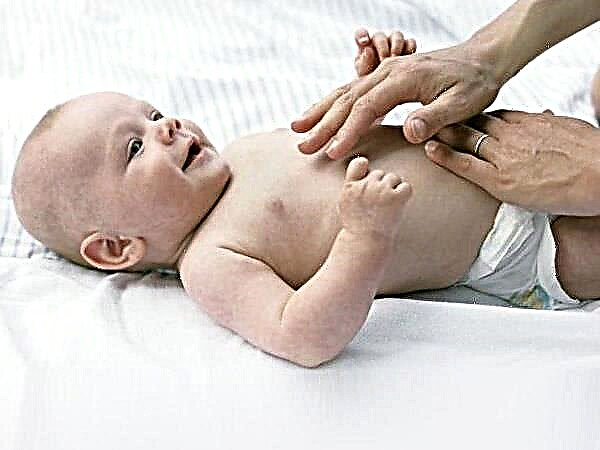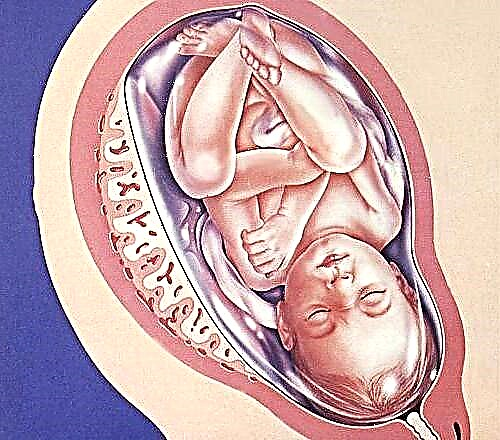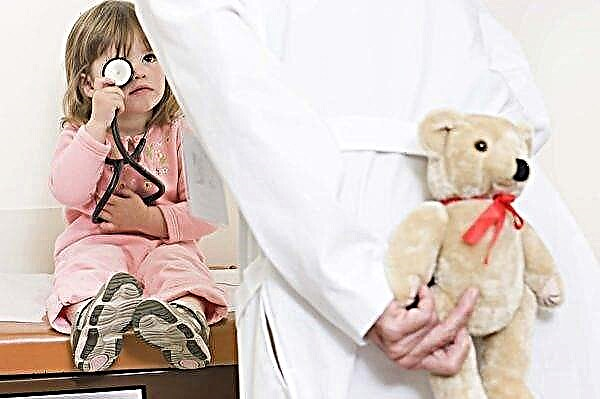Nature accurately calculated the period of development of the fetus. It is 280 days, or 40 weeks. Sometimes situations arise when a child, for some reason, is born earlier. The most common period when a premature baby is born is 7 months, so in everyday life such babies are often called seven months. Many parents in this case are worried that the premature baby will lag behind in development. In most cases, these fears are completely unfounded.

A premature newborn baby requires a lot of attention from parents and pediatricians
Additional Information. A newborn baby is classified as premature if its birth occurred in the period from 22 to 37 weeks of gestation. At the same time, there is a low weight - no more than 2.5 kg, and growth - up to 45 cm. Among prematurely born children, the highest morbidity and mortality are observed.
Premature baby and early labor
Doctors distinguish four groups of etiological factors, which, in their opinion, provoke premature birth:
- Socio-biological (elderly or too young age of a woman in labor, poor nutrition, smoking and drinking alcohol, hard physical labor, unstable psycho-emotional state, unsatisfactory living conditions);
- Severe obstetric and gynecological history (uterine hypoplasia, isthmic-cervical insufficiency, frequent abortions, ovarian hypofunction, in vitro fertilization, premature placental abruption, fetal hemolytic disease, cervicitis, corpus luteum insufficiency, endometritis, oophoritis)
- Diseases of a woman in labor (diabetes mellitus, hypertension, pyelonephritis, rheumatism, viral diseases in the third trimester of pregnancy, heart disease);
- Abnormal development and pathology of the fetus (the development of severe defects, genetic diseases, intrauterine infections).
In addition to the above reasons that provoke premature birth, there are also risk factors that must also be taken into account. They can manifest themselves both on the part of the woman in labor and on the part of the child.
On the mother's side, the following factors are distinguished:
- violation of menstrual functions and cycle;
- numerous miscarriages and abortions;
- premature birth of previous pregnancies;
- severe and prolonged toxicosis;
- chronic pathologies of the internal reproductive organs;
- frequent emotional stress.
From the side of the child:
- breech presentation of the fetus;
- multiple pregnancy;
- intrauterine infection of the child.

Clinical examination of the patient
Note. According to medical statistics, a greater number of preterm births occur in spring and winter, in summer and autumn they are diagnosed much less often.
Consequences of prematurity and vitality
To our great regret, among the prematurely born, one can often find physically and mentally disabled children. They may have the following pathologies:
- cerebral palsy;
- epilepsy;
- hearing and vision problems;
- decreased intelligence;
- anxiety;
- sleep disturbance;
- anomalies in the development of the skeleton.
Prematurity
Depending on the underdevelopment, body weight and gestational age, four degrees of prematurity of newborns are classified. The main criterion for this is the weight of the crumbs.
I degree
Most often, doctors are faced with the first degree of prematurity of newborns, the table is presented below. Babies are born in the period from 35th to 37th weeks with a weight of 2.1 to 2.5 kg. Such children, as a rule, do not require special conditions.
II degree
Babies of the second degree of prematurity are born at 32-34 weeks of gestation with a weight of 1.51-2.0 kg. Usually, with the provision of qualified medical care and the creation of appropriate care conditions, babies quickly adapt to new living conditions.
III degree
Very premature babies are born between the 29th and 31st weeks. In the medical card they write the diagnosis "III degree of prematurity." Many of these children survive, but in the future they need long-term rehabilitation and supervision by specialists in various fields.
IV degree
Children who appear less than 28 weeks old with a critically low weight, less than 1 kg, are assigned grade IV. Babies are immature, so they are completely unprepared for new conditions of existence. About 20% of these babies are born alive, but the probability of their survival is extremely low.
Determination of the development of a baby with varying degrees of prematurity
| Index | Prematurity | |||
|---|---|---|---|---|
| I | II | III | IV | |
| Focuses gaze, listens | 1-1.5 months | 1.5-2 months | 2-2.5 months | 2-3 months |
| Keeps the head in a "column" position | 1.5-2 months | 2 months | 3-4 months | |
| Rolls over from back to tummy | 5-5.5 months | 5-6 months | 6-7 months | 6.5-7.5 months |
| Stops flipping from belly to back | 6-7 months | 7-8 months | 7.5-8.5 months | |
| Sits without support | 6-7 months | 7-8 months | 8-10 months | 9-12 months |
| Stands alone | 9 months | 9-10 months | 11-12 months | |
| The first steps | 11-12 months | 11-13 months | 14-15 months | |
| First meaningful words | 11-12 months | 12 months | 12-14 months | |
Additional Information. Today, the survival rate of children born with low birth weight in developed countries is 92-96%, with critically low birthweight (less than 1000 g) - 90%.

Ultrasound diagnosis of pregnancy
External signs of prematurity
Children born prematurely have several striking clinical symptoms. The degree of their severity directly depends on how long the preterm birth took place.
The skin of deeply premature babies is thin, hyperemic, that is, it has a bright red color. It is abundantly coated with original lubricant. Fluffy hair is not only found on the shoulders and back, but also abundantly covers the forehead, cheeks, thighs and buttocks. The skin of the baby turns pale only 2-3 weeks after birth.
The body structure of the crumbs is disproportionate. A premature baby has a relatively large head and torso, short neck and legs, and a low navel. The tummy is large, its surface is flat. In deeply premature babies, all fontanelles and sutures of the skull are open.
The auricles are soft enough, which is associated with the underdevelopment of the cartilage tissue. The nail bed is not completely covered with nails. The nipples and areoles are poorly pigmented and barely visible on the baby's body.
In deeply premature babies, the external genitals may be underdeveloped. As a rule, in newborns of the first I and II degree of prematurity, clinical symptoms are not so pronounced.
Premature newborns rarely cry and do not exhibit excessive physical activity. If a seven-month-old baby is born, his body weight will be approximately 1.5-2 kilograms. The weight of eight-month-old babies can exceed 2 kg.

You can discuss the signs of prematurity in a newborn with a gynecologist or pediatrician.
Features of the development of a premature baby after birth
Each month of a child's life up to a year has its own characteristics. To understand how to properly care for premature newborns, you need to understand all the intricacies of physiology.
1st month
In the first month of life, babies are hypoactive. A slight increase in weight is recorded. Since the sucking reflex in premature babies is poorly developed, a special probe must be used to feed them. The mother should always be near the newborn.
II month
Two-month-old babies are more active, they gain weight more intensively and gain in length. At this time, they need to provide enhanced nutrition. If the baby refuses to breastfeed, the milk is pumped into a bottle and then given as needed.
III month
Many babies by this age already weigh 2 times more than at birth. Children respond well to sounds and light.
IV month
Children try to raise and hold their head on their own. Also, babies at this time learn to fix their gaze, begin to make sounds.
V month
Kids begin to navigate in space and perceive sounds. Also at this age, children are able to give their parents the first conscious smile.
VI month
Intensive growth is observed, the mass of children has tripled, compared with what they were born.
VII months
Seven-month-old babies are developing especially actively. They begin to roll over on their stomachs, pick up toys and crawl.
VIII month
Babies begin to control their bodies and may even consciously roll over. Some of them try to crawl and sit at this age.
IX month
Toddlers can sit, stand and stand on their own without assistance. Babies born at 32-34 weeks of age begin to erupt their teeth.
X month
Most of the children aged 10 months. can stand on their own, they begin to recognize their name. Babies born before the 31st week begin to develop teeth.
XI month
They try to walk and are attracted to toys like pyramids and cubes. In the speech of babies, there are already short words that mean various objects.
XII month
Upon reaching this age, premature babies cease to differ from toddlers who were born on time.
Caring for a premature newborn at home
Immature babies require special care. If the child can breathe on his own, then he and the mother are placed in the neonatal pathology department. There he stays until he gains 2.5 kg. When a baby is born without pathologies weighing 2500 g, he is discharged along with full-term babies.
After the child is discharged from the hospital, he will be monitored by a district pediatrician, as well as other specialists (neurologist, ophthalmologist, cardiologist, surgeon and orthopedist). Until the fontanelle is completely overgrown, an ultrasound of the brain is systematically performed.
At 12 months. the baby must be shown to a speech therapist and psychiatrist. As a rule, in the first year of life, the baby is prescribed vitamin and mineral preparations, physiotherapy procedures. The decision on the possibility of vaccination is made by the parent and a specially appointed commission.
Parents should coordinate all actions for the care of premature babies with a pediatrician, as well as other doctors of narrow specializations. After the baby is discharged, doctors recommend adhering to the following rules:
- the temperature in the room should be within 25 degrees, under the blanket - 30-32 ° С;
- humidity in the room should not exceed 50%;
- if additional heating of the child is necessary, only water heating pads are used, the water temperature in them should not exceed 60-65 ° C (before use, the heating pad is wrapped in a diaper or towel);
- the child should sleep on a firm mattress without a pillow (sleep on the stomach should not be allowed);
- it is possible to bathe a baby weighing up to 1.5 kg only after 2-3 weeks;
- measure head volume and body length weekly;
- up to 3 months for bathing, only boiled water with a temperature of 38 ° C is used;
- you need to feed the baby slowly;
- feeding frequency - 8-10 times a day;
- parents should limit the child's contact with strangers;
- until the baby has gained 2.5 kg, it is contraindicated to take it outside, but you need to air the room regularly;
- the mother should take the baby in her arms as often as possible, as this helps to speed up the process of adaptation and development of the child.
How to feed premature babies
Feeding is an important part of a baby's development. If the newborn is too small, and the sucking and swallowing reflexes are still absent, specialists decide to feed him with a food probe. To restore immature children in specialized stores, you can purchase hypoallergenic milk formulas that are adapted to their body.
The following equipment is required for tube feeding:
- sterile silicone probe;
- 0.02% furacilin solution;
- tweezers;
- bottle;
- 2 syringes in a cuvette (the volume is determined by the doctor observing the child);
- wadded turundas.
Parents should have on hand a constantly clean set for swaddling, rinsing the nasal cavity, washing the face, a container with 1% chloramine solution, cotton napkins, a specially allocated saucepan, a cuvette for used materials.
It should be noted! The best nutritional option for a newborn baby, regardless of the timing of birth, is breastfeeding. Breast milk fully meets all the needs of the newborn, because it contains all the necessary ingredients (vitamins, enzymes, nutrients and minerals).
It is very difficult for a child born prematurely to suck mother's milk from the breast due to the fact that the corresponding reflex is poorly developed or not developed at all. That is why, in order to fully saturate an immature newborn, parents need to feed the baby with expressed milk from a bottle.
After the child reaches the age of six months, it is necessary to introduce complementary foods in order to diversify the daily diet and enrich it with additional useful substances and vitamins. How much a child should eat complementary foods is determined by the pediatrician.
It is strongly discouraged to introduce new products earlier than the indicated period, since the baby's digestive system is not ready for the consumption of any components other than mother's milk or artificial mixture.

Feeding a boy through a tube
The conclusion is that a premature baby is not a sentence. Modern medical technologies make it possible to save the life of even a half-kilogram baby, but this, unfortunately, did not become a triumph of science. Most premature babies have huge health problems. In the CIS countries, the chances of survival in babies appear, whose birth weight is at least 800 g. The peculiarities of caring for premature newborns can be found out from the attending physician.



